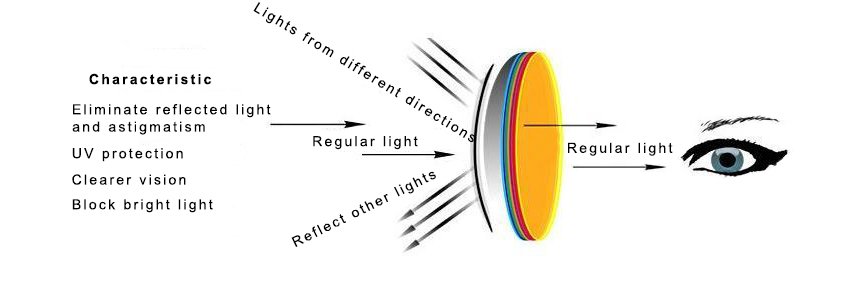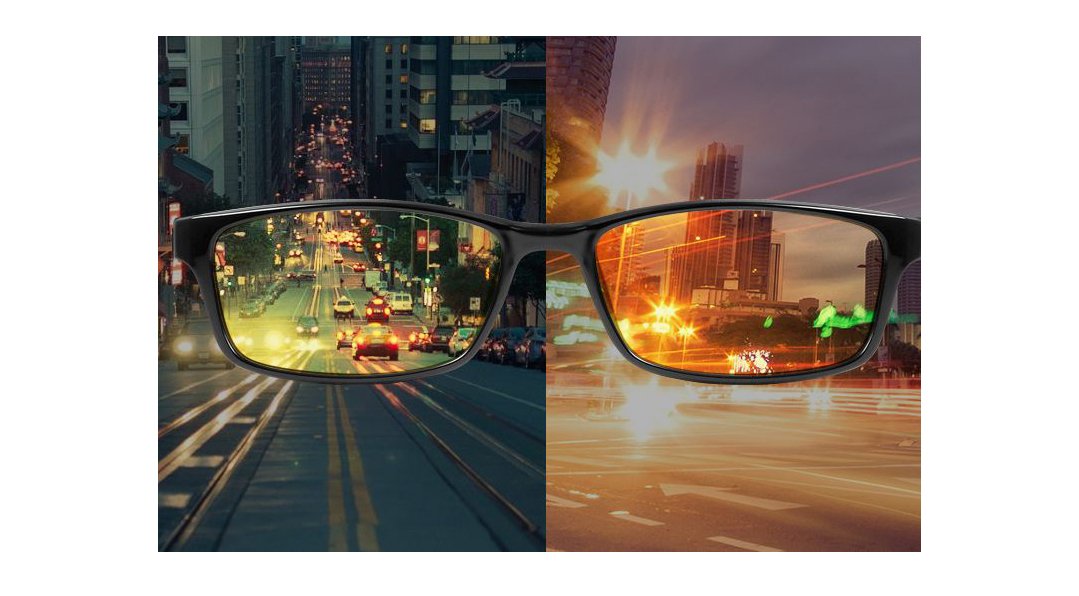We’ve all been there—driving into the sunset, the road a glowing ribbon of glare, or lying on a beach, squinting against the white-hot reflection of sun on sand. The sun can be as unforgiving as it is essential, and while a good pair of sunglasses can certainly help, there’s one kind of lens that promises to do more than just dim the world. Enter polarized sunglasses, those stylish shields heralded as saviors from glare. But are they truly the breakthrough they claim to be, or is it all just a bright, shiny promise? Let’s look behind the lenses.
Understanding Polarized Sunglasses
Polarized sunglasses, also known as polarized light sunglasses, are special eyewear designed based on the principle of polarized light. They employ a polarizing film layer on the lenses that allows only light of a specific direction to pass through, filtering out light from other directions, particularly horizontally reflected light (such as from water, snow, or road surfaces), thereby significantly reducing glare and enhancing visual clarity and contrast.
What Exactly Are Polarized Sunglasses?
At first glance, polarized sunglasses might seem like any other shades, but they come with a secret weapon: a filter that neutralizes glare. Unlike standard sunglasses, which simply reduce the overall brightness, polarized lenses specifically target horizontal light—the kind responsible for that blinding glare off shiny surfaces like car hoods, water, or wet pavement. The filter, embedded in the lens, blocks the harshest of reflections, letting you see the world in a clearer, more serene light.
How Do They Work?
Think of light as a wave traveling in different directions. When light reflects off a flat surface, it tends to bounce back horizontally. That’s where glare comes from—a laser-like burst of horizontal light, sharp enough to cut through the tint of ordinary sunglasses. Polarized lenses, with their vertical filter, act like a gatekeeper, allowing only vertical light waves to pass through. The result? A softer, clearer view, free from the sharp edges of reflection.

Why You Need Polarized Sunglasses?
Glare Reduction: More Than Just a Perk
It’s not just about looking cool—though, let’s face it, good sunglasses do help. Glare is more than an inconvenience; it can be downright dangerous, particularly when you’re driving, cycling, or skiing at high speeds. Imagine missing a critical detail on the road because a shiny surface blinded you for a moment. Polarized sunglasses help eliminate those high-risk moments, allowing you to focus on what matters—whether it’s the car in front of you, the ski slope ahead, or the path to the beach bar.
Enhanced Visual Comfort: Goodbye, Eye Strain
Even when glare isn’t a direct hazard, it’s exhausting for the eyes. The constant effort to squint or filter out reflections on your own can lead to fatigue, headaches, and the kind of frown that not even the most potent SPF can prevent. Polarized lenses reduce this strain, making it easier to enjoy long days outdoors without that telltale squint.
Color and Clarity: A Sharper World
Another bonus? Polarized lenses don’t just dull the brightness—they sharpen it, too. By reducing scattered light, they enhance contrast and depth, making colors pop with an intensity you didn’t know you were missing. Whether you’re scanning the horizon for a fish while boating or just admiring a landscape, polarized sunglasses make the world look richer and more textured, like someone’s turned up the resolution on reality.

Where Polarized Sunglasses Shine
Driving: The Ultimate Safety Accessory
Driving with the sun in your eyes is not just unpleasant—it’s unsafe. Polarized lenses, by cutting through the intense reflections that bounce off other vehicles, wet roads, or chrome surfaces, make driving in bright conditions not only more comfortable but also safer. For anyone who spends a lot of time behind the wheel, particularly during dawn or dusk when the sun’s at its trickiest angles, polarized sunglasses are less a luxury than a necessity.
Outdoor Sports: Boosting Performance
Whether you’re skiing down a blindingly white slope or scanning the water for your next big catch, polarized sunglasses have a clear advantage in sports. For anglers, these lenses reveal the water beneath the surface, cutting through the glare to show what’s hidden from ordinary view. Skiers benefit from reduced glare on sunlit snow, allowing for sharper focus on the path ahead. And for general outdoor enthusiasts, from golfers to cyclists, the enhanced clarity and reduced strain make polarized sunglasses a game-changer.
Daily Wear: Elevating the Everyday
You don’t have to be scaling a mountain or hitting the highway to enjoy the perks of polarized lenses. For casual strolls in the city or leisurely afternoons in the park, polarized sunglasses elevate the everyday experience, making sunny days feel a little less harsh and a lot more enjoyable.

Polarized Sunglasses vs. Non-Polarized: The Verdict
- Comparing Benefits: Why Polarized Wins
Non-polarized sunglasses may reduce brightness, but they fall short when it comes to tackling glare. Polarized lenses, with their specialized filter, are designed to make the most of your outdoor experience, providing clearer, more comfortable vision. If you spend significant time in bright, reflective environments, polarized sunglasses are the obvious choice.
- Cost: An Investment Worth Making
Yes, polarized sunglasses tend to be pricier than their non-polarized counterparts. But for those who value visual comfort, safety, and clarity, they’re worth the splurge. Think of it as an investment—not just in eyewear, but in a more comfortable and secure experience of the world around you.

Conclusion
Polarized sunglasses aren’t just a fashion statement—they’re a smart, functional upgrade for anyone who spends time outdoors. Whether you’re navigating city streets, exploring nature, or simply lounging at the beach, the benefits of polarized lenses go beyond looks. So next time you shop for sunglasses, consider going polarized. Your eyes will thank you.



FAQs
1. What is the main purpose of polarized sunglasses?
The main purpose of polarized sunglasses is to reduce glare from reflective surfaces, providing clearer and more comfortable vision in bright environments.
2. Can polarized sunglasses damage your eyes?
No, polarized sunglasses do not damage your eyes. In fact, they can help reduce eye strain and fatigue caused by glare.
3. Do polarized sunglasses work in low light?
Polarized sunglasses are not ideal for low-light conditions as they can reduce visibility by blocking certain light waves.
4. Are polarized sunglasses more expensive?
Yes, polarized sunglasses tend to be more expensive due to the technology used to reduce glare. However, the added benefits often justify the cost.
5. Can you wear polarized sunglasses indoors?
While you can wear polarized sunglasses indoors, they are not necessary and can make it harder to see in dimly lit environments or when using digital screens.
The End
Thank you very much for your reading.



